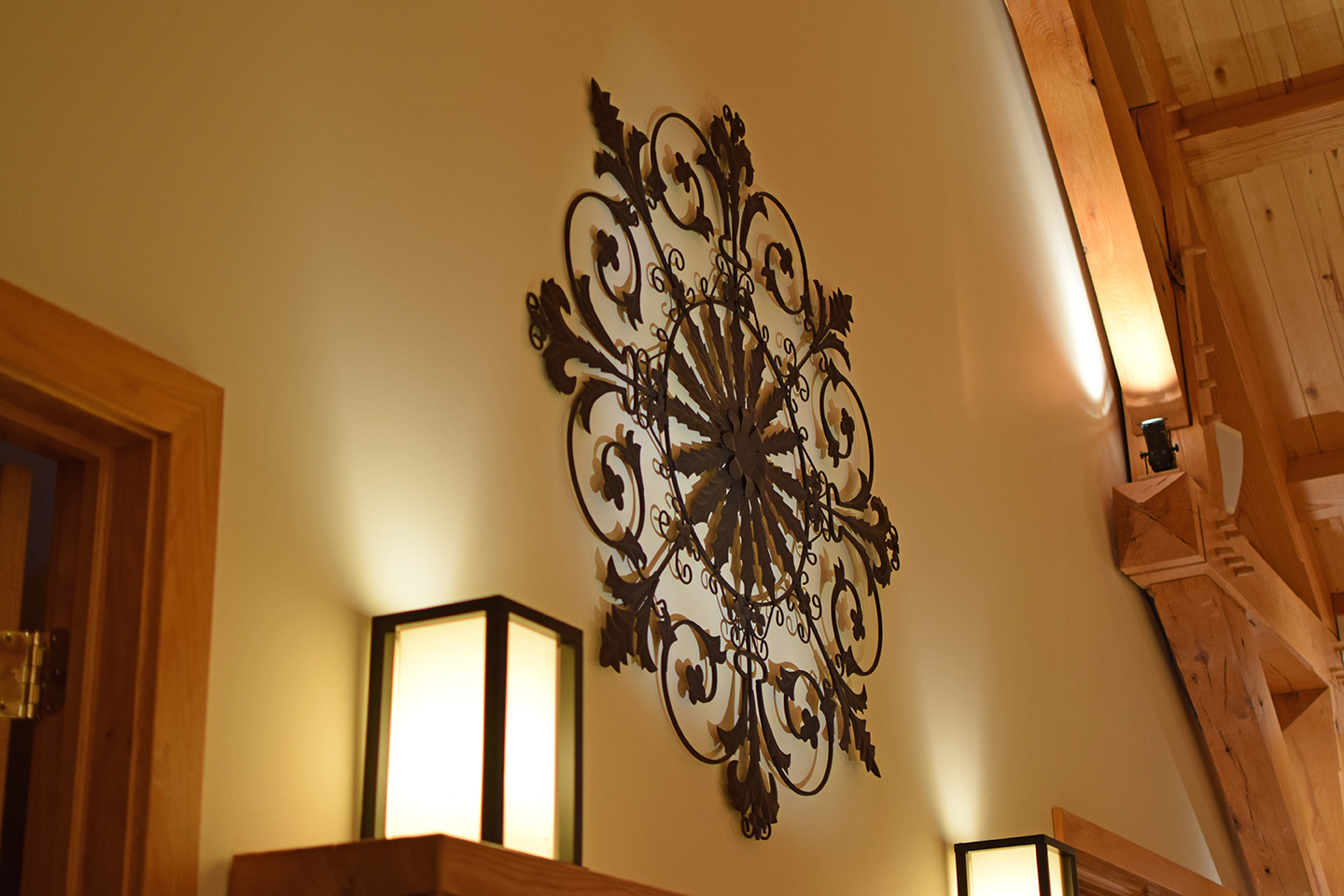The Gift’s second promise is that light can help us know where we are, where we are going, and who we are with. Light for knowing may take the form of “ambient” light, which is soft, diffuse, general light that dimly fills a space. But it may also be much more focused light that gives us a light at the end of the tunnel or light on key architectural details that make our house a home.
If the entire room is lit with even brightness, we will certainly know where we are- but it will not feel right. Instead, the room will begin to feel antiseptic and institutional, like a hospital exam room. A more interesting approach is to highlight key architectural details, such as ceiling beams and built-in bookshelves. We can then leave the spaces between the beams or between the bookshelves darker, which makes the space feel more relaxing and unique.
Knowing where we are going requires two kinds of light- light beyond (to walk towards) and light for our feet. Light beyond, or the proverbial light at the end of the tunnel, invites us to move into the next space. If the path is clear, we can often reach our destination if there is light to move towards, even when the path is dark. But if there is something on the path that might cause us to stumble, it is also good to have light for our feet.
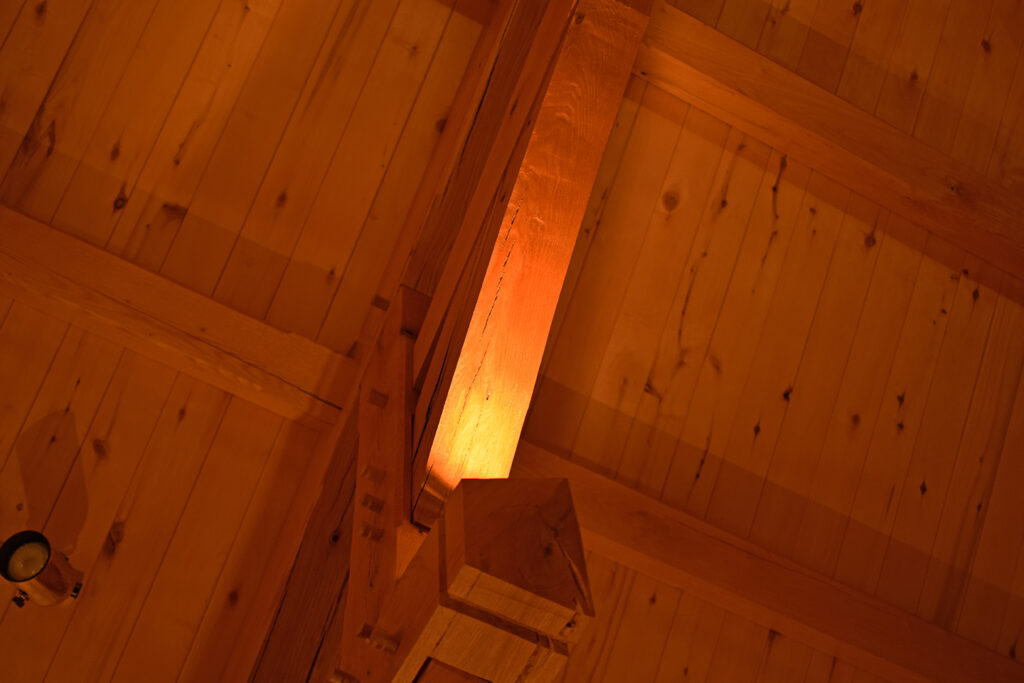
Have you ever sent an email or letter or text and had your intent misread by the receiver? The same thing can happen in face-to-face encounters if you are unable to read each other’s faces. Light for knowing can help us see our loved ones and correctly read their emotions.
Light for knowing- indeed many of the layers of light- can be a little trickier in double-height spaces like great rooms with vaulted ceilings. Our tendency to place all lighting on the ceiling becomes even more problematic when the ceiling is twelve, fourteen, or even sixteen feet above the floor. If lighting focuses on the ten feet of space above our heads, then we will always feel that we are in the darkest part of the room- and that just is not comfortable.
Last year I visited a friend living in a beautiful timber-framed home with soaring ceilings. This friend had at least twenty-two lights in his great room- twenty-two! Yet he asked me to come visit because he knew, instinctively, that something wasn’t right. The space just was not as comfortable as he had hoped, and he thought I might be able to help.
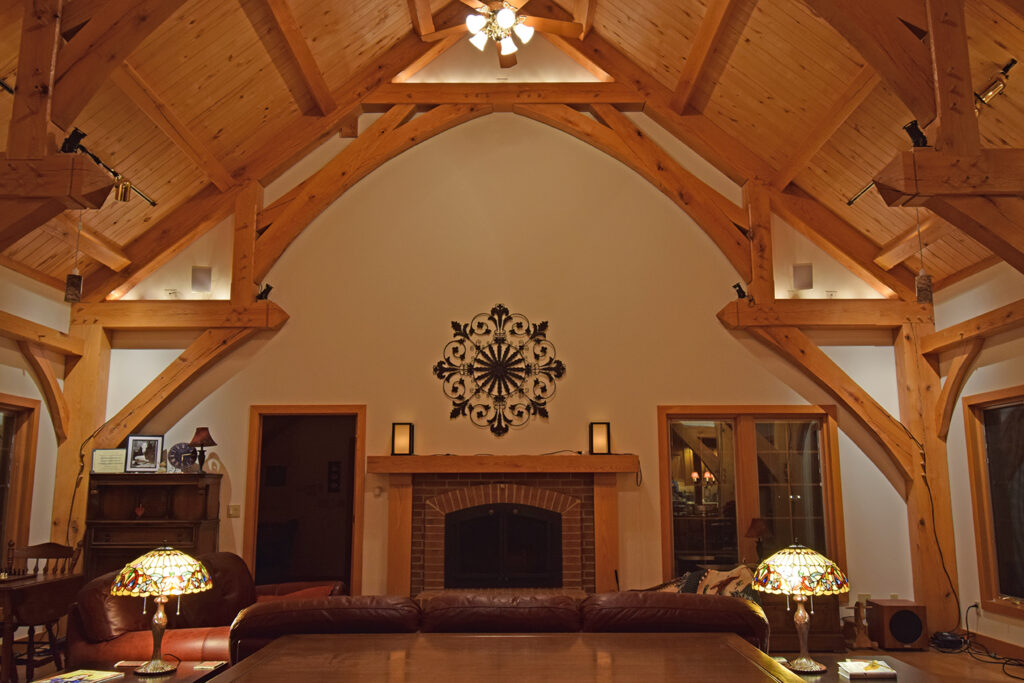
The timber framed structure, wood ceiling, beautiful windows, and wood floor in this home are stunning features. And where was it brightest? You probably guessed it- the brightest spots of all were not on any of those features. Instead, my eye was drawn to ceiling fan lights near the ceiling and to hidden accent lights that brightly illuminated painted drywall and even speaker grills. The ceiling fans became what I tend to call “glare bombs,” or giant bright lights that are no fun to see. The fans also had the unfortunate side effect of illuminating a blank piece of wall above the fireplace- above the artwork, and above the mantel, and above the brick work. It was light for knowing where we were- but in the wrong place.
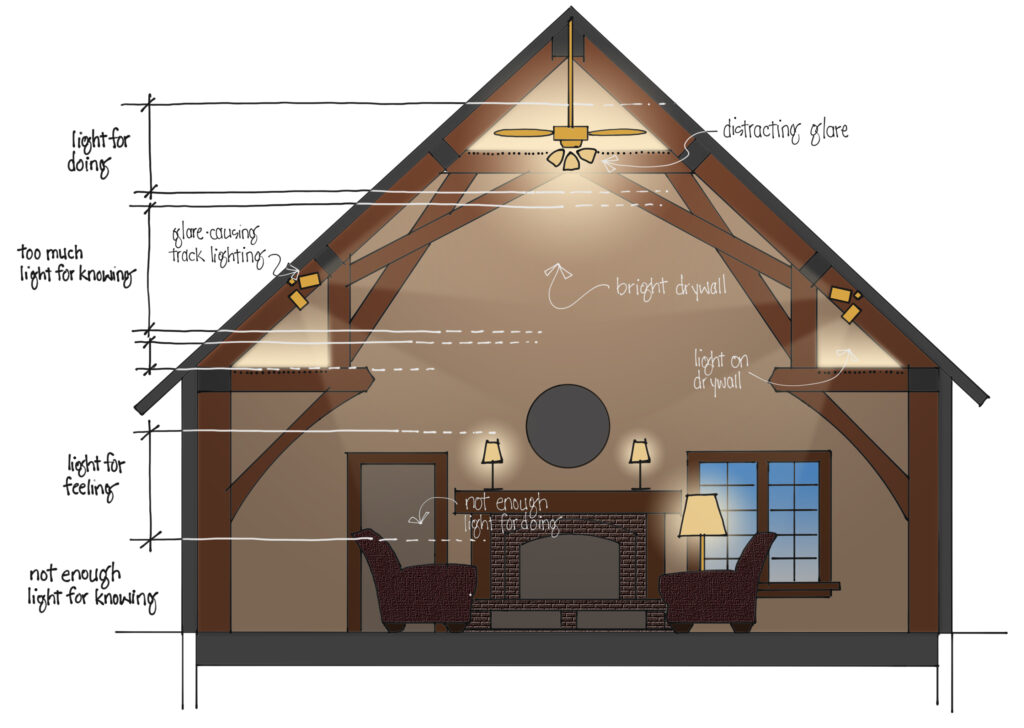
Light for knowing where we are in a space this large needs to be carefully- even artfully- placed.
The first thing I ask when encountering such a space is “what is already here that should be illuminated?” Tiny spotlights could be aimed at the timber structure, especially calling attention to soaring arches and hand-made connections. Dimmed to be visible but not distracting, these spotlights help us know the beauty of the space and our place in it without making us feel too small. Indirect light might also be a good solution, especially considering the ceiling is covered in wooden planking. Softly and discretely cast from track lighting or light shelves, the layer of indirect lighting would really help us know where we are.
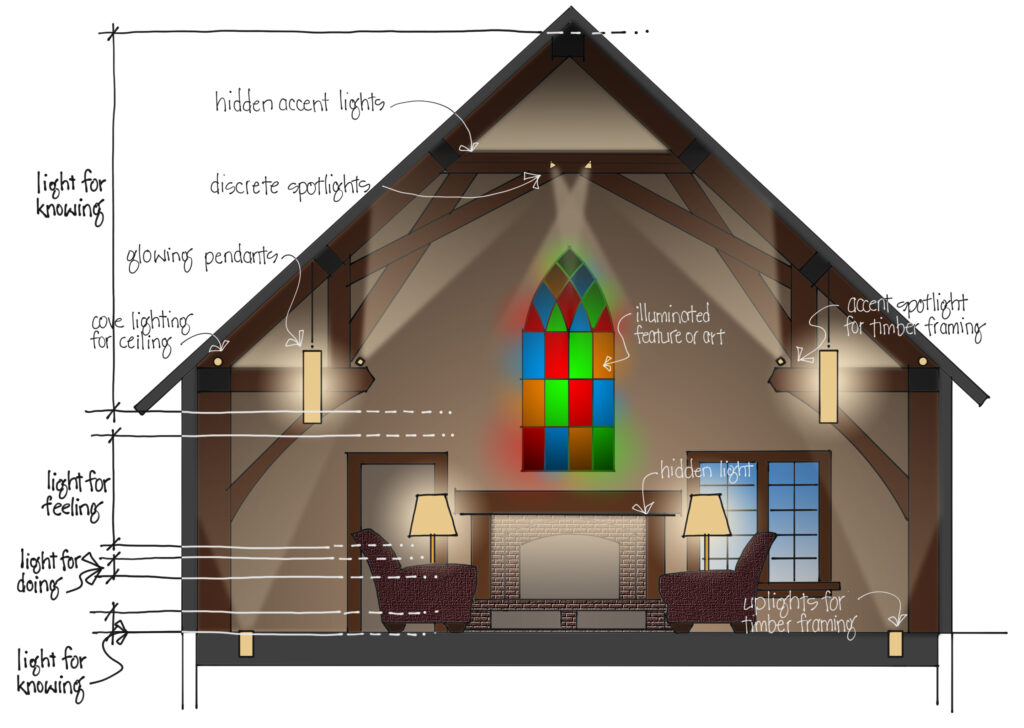
Keep in mind that we are usually not much taller than six feet tall, so we’ll need light for knowing in the lower half of the room, too. Ambient light from pendants and floor lamps will softly illuminate the part of the room around us and help increase light where it is needed most. Both of those will also contribute to light for feeling good, and the floor lamps are critical for light for doing. This is another example of how one solution might cover two more promises. In fact, the taller the space, the more floor or table lamps you’ll probably need for the space to feel balanced.

I spent several hours in the home one evening setting up a mockup of potential lighting solutions, assisted by my son Sam and the homeowner. Turning off the ceiling fans, adjusting the track, adding lamps and pendants, grazing the fireplace, and highlighting structural elements helped shift the balance of the room considerably. We still need dimmers, smaller, more focused fixtures on the beams, and a few other details, but the room already feels much more comfortable.
Now the room more ably delivers the Gift of Light.
